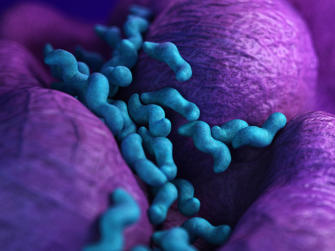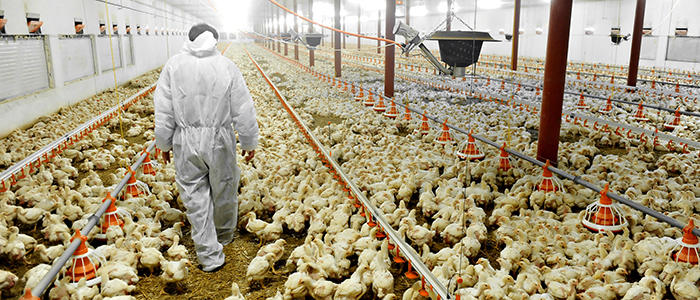New Antibiotics Needed: Campylobacter
Posted on January 17, 2019 by Matt Bassett
In 2017 the World Health Organisation (WHO) published the 12 Priority Pathogens. This list is a catalogue of the pathogens they believe pose the greatest threat to human health. The list draws attention to the growing incidence of antimicrobial resistance (AMR) evolving in bacteria, a development that is particularly worrying as genetic material can be passed between different species of bacteria, spreading resistance to life-saving antibiotics.
The History of Campylobacter
The fourth priority pathogen in this blog series is Campylobacter. Commonly comma or s-shaped, the name Campylobacter means ‘curved bacteria’. Theodor Escherich first described the symptoms in 1886, but it took a further 20 years before the first species was isolated by Sir John McFadyean in 1906.

Campylobacteriosis
In a previous blog, we discussed the development of AMR in Salmonella, and although these bacteria are known for causing food poisoning, Campylobacter is the king. Gastroenteritis is the inflammation of the gastrointestinal tract, causing diarrhoea, vomiting and other unpleasant symptoms. It can be caused by a number of pathogens, but according to WHO, the Campylobacter genus is the leading cause of gastroenteritis in the world.
The specific gastroenteritis infection caused by Campylobacter is campylobacteriosis. There are a number of ways to contract the infection, but the most common is eating contaminated or under-cooked food. According to a study from 2008, 97% of cases can be traced back to livestock, and 57% of those to chicken. Exposure to the bacteria in the UK is relatively low, however whilst travelling, risk increases significantly, and many gap-year goers have experienced an uncomfortable bus journey while travelling with campylobacteriosis, often referred to as ‘traveller’s diarrhoea’, ‘Delhi belly’ and ‘Montezuma's revenge’.
The symptoms can be nasty; the first signs are fever, headaches and muscle pains. After 24 hours symptoms develop into often bloody diarrhoea, dysentery, cramps, abdominal pain and fever. Despite being immensely unpleasant, the symptoms will usually clear up after 10 days and unless severe, rarely require antibiotics.
Developing Fluoroquinolone Resistance
Fluoroquinolones are a large group of broad-spectrum antibiotics used to treat bacterial infections. Although antibiotics are rarely needed to treat infections caused by Campylobacter, the proportion of fluoroquinolone-resistant Campylobacter strains has been increasing since the late 1980s.

Mass administration of antibiotics to livestock could have been one of the leading causes in the development of antibiotic resistance
Mass administration of antibiotics to poultry for a single occurrence of campylobacteriosis – a practice that is now banned – has promoted an increase in antibiotic resistance. Due to examples of antibiotic misuse such as these, AMR in livestock is very high. In the USA 16% of Campylobacter jejuni isolated from cattle showed resistance to Ciprofloxin (CIP), a fluoroquinolone antibiotic used in veterinary medicine. In cattle from Africa 43% of bacteria exhibited resistance to CIP, and in Europe resistance was even higher, with 63% of bacteria isolated from pigs showing CIP-resistance. This rising occurrence of AMR-bacteria in livestock is particularly worrying as it is difficult to know whether they transmit from animals to humans, and how much this reduces the effectiveness of antibiotics fluoroquinolones used in human medicine. Therefore, there is an urgent call for detailed research to accurately assess the risk.
‘Trends in fluoroquinolone resistance in Campylobacter’ is published in the Microbial Genomics collection New Antibiotics Needed. This collection contains 12 fully open access review articles, one for each of the WHO 12 Priority Pathogens. Written by Emma L. Sproston, Helen M. L. Wimalarathna, and Samuel K. Sheppard, the review discusses fluoroquinolone resistance in Campylobacter, its acquisition and spread, the role of horizontal gene transfer, and trends in livestock samples and clinical cases.
This is the forth blog in the ‘New Antibiotics Needed’ series, to read more about the other pathogens on the WHO’s priority pathogen list, follow the links below:
New Antibiotics Needed: Salmonella

